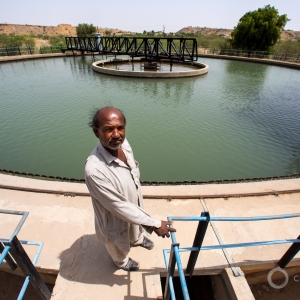Federal Water Tap, June 1: EPA Outlines Methylmercury Study Methods
The Rundown
The EPA’s chemical risk assessment division is reviewing a two-decade-old safety limit for the neurotoxin methylmercury. A report analyzes the success of water and sewer projects funded by the Appalachian Regional Commission. USDA allocates $280 million for rural water and sewer projects. USAID worries about coronavirus fallout for water providers in developing countries. And lastly, the EPA’s internal watchdog will investigate the agency’s oversight of drinking water systems in tribal nations.
“If we’re looking at insolvency of water and sanitation service providers, that poses huge risks to universal access goals and threatens hard-won gains on improvements in access rates that we’ve seen in the past decade or two.” — Jeff Goldberg, director of the Center for Water Security, Sanitation and Hygiene at the U.S. Agency for International Development, discussing the potential effects of the coronavirus pandemic on drinking water access in low- and middle-income countries. Goldberg cited a survey by the Water Service Providers Association of Kenya that found that revenue collection is down by 70 percent among its members.
By the Numbers
$280 million: Funding announced for rural water and sewer projects. Seventy percent of the funds are loans, and the rest is grants. Projects include improvements to the wastewater treatment system in Granby, Missouri, which has been out of compliance, and construction of a 14-mile pipeline to connect the 300 residents of Burlington, Wyoming, to a regional water system. (USDA)
News Briefs
EPA Releases Mercury Study Methods
The U.S. Environmental Protection Agency division that assesses the human health hazards of chemicals released a draft outline of how it plans to study the effects of methylmercury on brain development for children who were exposed to the chemical before birth.
Exposure to methylmercury generally occurs from eating fish or seafood in which the chemical has accumulated. The chemical can pass from mothers to fetuses through the placenta.
In light of new studies, the assessment will reevaluate a safety limit that the EPA published in 2001.
A revised limit could influence water quality regulations and cleanup requirements at toxic sites.
Public comments on the review methods are being accepted through July 13, 2020. Submit them via www.regulations.gov using docket number EPA-HQ-ORD-2018-0655.
Studies and Reports
Water and Wastewater Projects in Appalachia
Grants from the Appalachian Regional Commission for water and wastewater projects targeted the communities most in need, according to an analysis of the grant program.
The commission is a federal agency whose mission is to promote economic development in a 13-state region that stretches from Alabama to New York. The water and wastewater grants provided $115 million for 379 projects between 2009 and 2016.
Those funds typically accounted for one-fifth of a project’s full cost, which included money from local, state, and federal sources.
The report was prepared for the commission by the Environmental Finance Center at the University of North Carolina at Chapel Hill.
On the Radar
EPA Oversight of Tribal Drinking Water
The EPA’s internal watchdog will begin an investigation into the agency’s oversight of drinking water systems run by tribal nations and the agency’s Covid-19 response for those systems.
In context: As Pandemic Magnifies Navajo Nation Water Deficit, Coronavirus Funding Questions Arise
Hearings in Congress
On June 2, the House Committee on Energy and Commerce will speak with three governors about their responses to the pandemic. Govs. Jared Polis of Colorado, Gretchen Whitmer of Michigan, and Asa Hutchinson of Arkansas will testify.
On June 4, the Senate Committee on Environment and Public Works will discuss the role of infrastructure in the nation’s economic recovery from the pandemic.
Federal Water Tap is a weekly digest spotting trends in U.S. government water policy. To get more water news, follow Circle of Blue on Twitter and sign up for our newsletter.
Brett writes about agriculture, energy, infrastructure, and the politics and economics of water in the United States. He also writes the Federal Water Tap, Circle of Blue’s weekly digest of U.S. government water news. He is the winner of two Society of Environmental Journalists reporting awards, one of the top honors in American environmental journalism: first place for explanatory reporting for a series on septic system pollution in the United States(2016) and third place for beat reporting in a small market (2014). He received the Sierra Club’s Distinguished Service Award in 2018. Brett lives in Seattle, where he hikes the mountains and bakes pies. Contact Brett Walton






Leave a Reply
Want to join the discussion?Feel free to contribute!